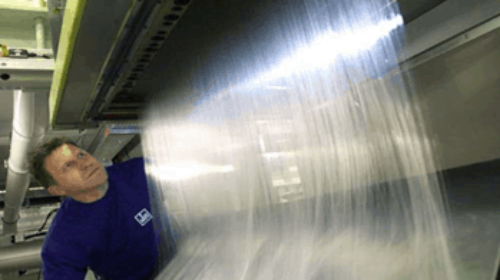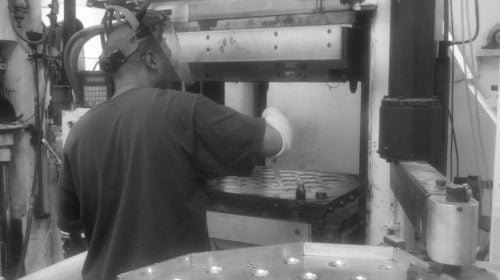THE SITUATION
The Cleansing and Maintenance Division (CMD) of the Ministry for Tourism and Consumer Protection of Malta provides waste management services to Central Government and Local Councils, particularly Public Cleansing, in order to keep urban and non-urban areas free from litter and illegally dumped waste, thus enhancing the environment.
The environment is the common heritage of present and future generations and should be conserved and protected. The purpose of the Cleansing Directorate is to promote an environment free from refuse, rubbish, debris, litter, dirt or any other form of abandoned waste.
Units under the Cleansing and Maintenance Division responsibility include:
• Cleansing of Arterial Roads Unit
• Cleansing of Public Areas and Open Spaces Unit
• Beach Cleansing Unit
• Cleansing of Public Conveniences Unit
• Maintenance of Rainwater Systems
Total Number of Employees: approximately 100. However seasonal increments are also a norm.
THE PROBLEM
As part of the overall street scape project, the Cleansing and Maintenance Division wanted to keep public spaces all over Malta clean while also eliminating the risk of damaging the parent material, which in the Maltese case this comes as a mixture of globigerina limestone and lower coralline limestone. The latter being much harder than the other one. Interestingly, globigerina limestone is easy to build with and easy to shape. This makes it the most commonly used “stone” for construction since prehistoric times. Moreover, since this type of stone is essentially composed of different marine sediment and since the stone structure was formed thanks to such sediments piling up over each other and exerting pressure over each layer, the end result is that of a soft and porous rock structure. Such porosity, is a nightmare for any professional restorer.
Traditional restoration implied the use of power washing, sanitation street cleaning trucks that use spinning brushes and heated pressurized jets of water, manual scrubbing, and solvents.
The process tends to be lengthy and costly as it is significantly labor intensive. In addition to that, the target material (limestone and granite, or hard stone) is a growing concern as with manual abrasive methods and solvents the target material is at risk of erosion. The objective is to find a better method and technology to remove dirt, graffiti oil contamination, and exhaust fumes that contaminate building walls while leaving the parent limestone as intact as possible.
THE SOLUTION
CMD was evaluating portable technologies similar to hydro power washing (different brands and capabilities). Faced with this challenge, Mediterranean Industrial Services recommended dry ice blasting. Dry ice blasting is a technique which is void of most of the challenges that traditional techniques typically pose.
Cold Jet’s dry ice cleaning system uses non-abrasive media in the form of recycled CO2 pellets that won’t damage surfaces. The dry ice media, blasted using pressurized air at user-controlled speeds, sublimates upon impact with the surface being cleaned, lifting away dirt and contaminants safely, without leaving behind any secondary waste.
“Removing graffiti and chewing gum with the traditional methods is difficult and time consuming. Disposal of solvents is expensive and in general they are toxic,” said Robert Busuttil, Senior Engineer and Co-owner of Mediterranean Industrial Services (MIS). “With manual abrasion methods there is a risk of erosion to the parent material.”
THE RESULTS
“As a matter of fact, we recommended Cold Jet’s PCS 60 dry ice blaster. For sure and with respect to restoration projects, the PCS 60 is superior not just to Cold Jet’s other brands, but to the other manufacturers in the market. The results obtained speak for themselves,” said Mr. Busuttil.
The PCS 60 offers the unique ability to control three major parameters with unequaled precision – BLASTING PRESSURE with a resolution to the nearest tenth of a bar, DRY ICE FEED RATE with a resolution to the nearest 100 grams per minute feed, and DRY ICE PELLET SIZE with a resolution to the nearest tenth of a mm (smallest pellet size 0.3mm, largest pellet size 3mm). In addition, the various nozzle profiles are meant to offer the operator the versatility required, keeping an eye on the overall operational efficiency. This versatility allows the operator to be gentle or aggressive as required, depending on the objectives set for the project.
With the PCS 60, graffiti is removed in a matter of minutes (depending on the area to clean up in m²) whereas, with the traditional methods it had taken hours to do the same cleaning job.
Reducing cleaning times, reducing employee hardship, elimination of the risk of damaging the parent material, and the elimination of the use of toxic solvents are some of the key benefits of using Cold Jet’s dry ice blasting system, the PCS 60.
“For us, the PCS 60 is and will be mostly used to remove graffiti, oil contamination, and exhaust fumes that contaminate buildings, walls, and in general public spaces all over the islands”, said Mr. Busuttil.




